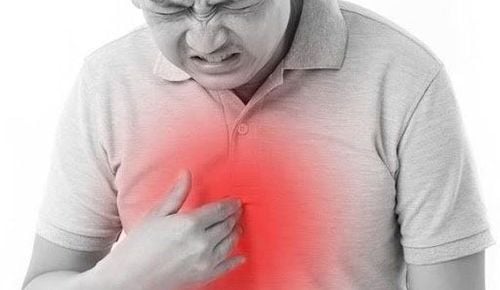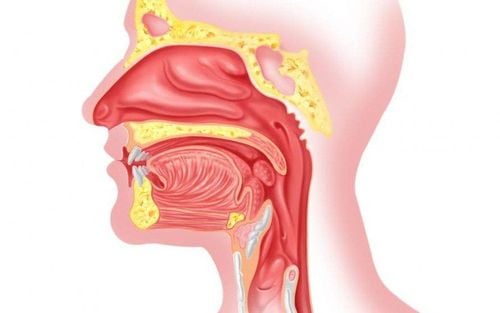This is an automatically translated article.
Nasal curvature are long and narrow curved bones that protrude into the nasal cavity, covered with mucosa above. The most common pathology in the nasopharynx is hypertrophy and is usually treated by ablation to help narrow the nasopharynx.
1. What is a nose bridge?
On one side of the nasal cavity, there are three nasal tufts, in the order of the upper, middle and lower nasal ones.
The inferior nasolabial fold is a separate facial bone, articulated with the ipsilateral maxillary and palatine bones, respectively. Meanwhile, the middle and superior nasolabial folds are part of the floor bone. All nasopharynx are located within the nasal cavity and are covered by respiratory epithelium with mucus-secreting glands. Beneath the mucosa of the nasolacrimal duct, there is a rich distribution of blood vessels that can expand to help the nasopharynx become erect when needed.
2. What is the function of the nasopharynx?
Some of the functions of the coil are:
Warms the air Filters the dust in the air, along with the nasal hairs Immune The nasolacrimals participate in the nasolacrimal cycle. Accordingly, three pairs of nasal rolls will congest and shrink alternately after one to seven hours. Congestion in the nose will cause the nasal cavity to narrow, restricting the flow of air.

Mũi có tác dụng làm ấm không khí
3. Possible diseases at the tip of the nose
Diseases that can be encountered in the conjunctiva include:
Colds : Congested congested nose caused by the common cold. Allergies: Allergens from the environment when in contact with the mucous membranes on the nasal tip cause allergic reactions and congestion, swelling. Sleep Apnea: Excessive size or vasomotor disturbances at the site of the nasopharynx are one of the causes of sleep apnea. Sinus : This is a fairly common condition when there is an air sac in the nasolacrimal ducts. It is this structure that can lead to limited drainage in the nasal cavity and predispose to infection due to subsequent obstruction. Nasal valve stenosis: The nasal valve is the narrowest part of the airways in the nasal cavity, located below the lower nasal turbinate. The lower nasopharynx itself is already the largest of the three nasolacrimals. Therefore, if the lower nasal turbinate is larger than normal, it will cause more narrowing of the nasal valve. The narrowing can be further aggravated if the nasal valve collapses due to trauma, a deviated nasal septum or from rhinoplasty during cosmetic surgery on the bridge of the nose.

Xoang hơi có thể xảy ra tại cuốn mũi
4. Burning of the nose in the treatment of diseases in the nose
Among the nasopharyngeal interventions, radiofrequency ablation is a common surgical option with minimal invasiveness.
With this method, the doctor can reduce the volume of tissue precisely and on target. By using radiofrequency to induce ionizing energy injury in the submucosal tissue of the nasopharynx and create scarring, the total tissue volume is reduced with very little impact on the surrounding tissues.
A fundamental difference that creates the advantage of radiofrequency ablation compared to traditional methods is that the procedure is relatively quick and painless, and causes less bleeding in the abdomen. tissue. Furthermore, nasal mucosal function is preserved.
4.1 Indications for nasopharyngeal ablation
Nasal ablation by using radiofrequency waves is indicated in the following cases:
Nasal congestion and excessive runny nose and is associated with hypertrophy of the nasal mucosa Congestion with hypertrophy of the nasal mucosa with deviated nasal septum Sleep apnea with nasal obstruction and difficulty wearing a nasal CPAP mask Hypertrophy and stagnation of nasal septum after septal resection, rhinoplasty, or endoscopic surgery Resistant rhinitis treated with medical treatment
4.2 Contraindications of nasopharyngeal burning
There is no absolute contraindication to radiofrequency ablation.
However, because this procedure uses high-frequency waveform ablation energy, intervention is not indicated in patients with pacemakers or other electronic devices unless may temporarily decommission these machines.
In addition, in patients with significant systemic comorbidities, such as: Hypertension or diabetes, intervention always requires specialist advice. Furthermore, discontinuation of anticoagulation therapy for 72 h prior to treatment is necessary.
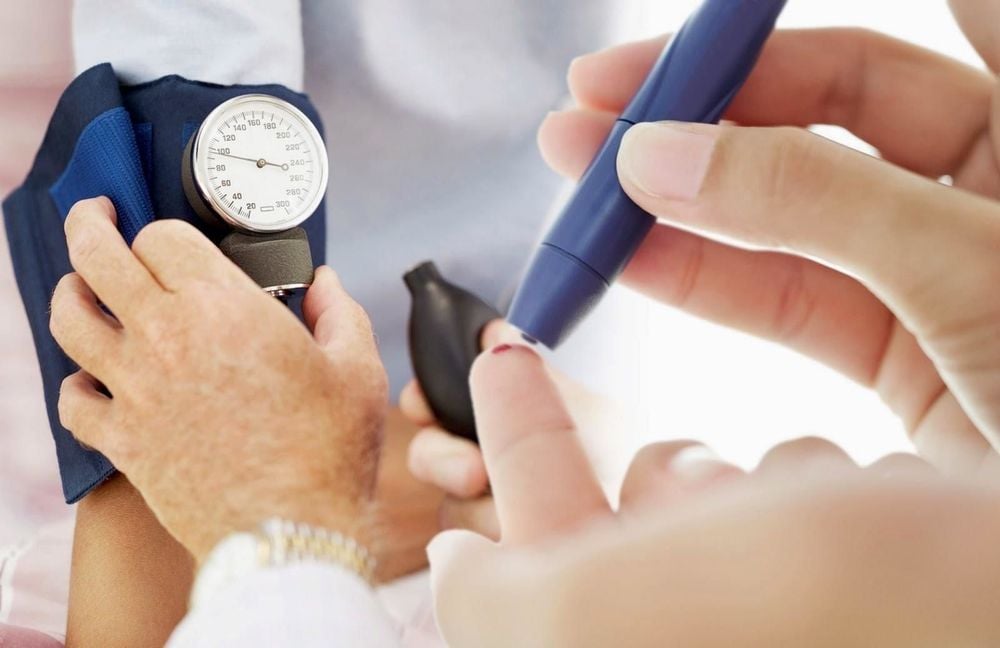
Bệnh nhân đái tháo đường khi thực hiện đốt cuốn mũi cần tham khảo ý kiến bác sĩ
5. Interventional procedure of burning the nose with high frequency waves
5.1 Preparation of tools
Hand drill Cable Connector Radio Transmitter Local anesthetic Topical decongestant Syringe, 3 mL Sewing needle Tampon bandage
5.2 Local analgesia
When the procedure is performed with the patient awake, local anesthetic can be administered using 4% cocaine and a vasoconstrictor, sprayed into each nasal cavity. The patient was then further injected locally with 1 ml of 1% cocaine with 1% epinephrine.
If this procedure is performed during a procedure or surgery other than general anesthesia, this step will be skipped.
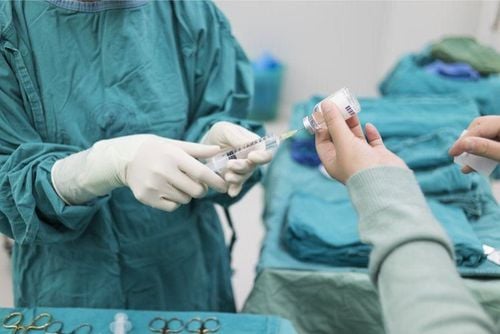
Bệnh nhân đốt cuốn mũi được gây tê giảm đau tại chỗ
5.3 Carrying out burning of the nose
Patient is laid comfortably and the head is fixed. Insert the tip of the handpiece with a hand-held needle electrode into the anterior part of the nasal tip to be intervened. Turn on the power supply at 350-500 joules, 2-10 watts and 70-80 volts, with a target temperature of 80°C at each site of injury. This system is activated usually takes 2 minutes per lesion. Create a depth per intervention site no more than 5 mm to reduce the risk of mucosal damage, ulceration or peeling. However, it can be adjusted depending on the local structure. Local hemostasis if bleeding occurs, is uncommon. Check the nasal cavity again before switching to the opposite side.
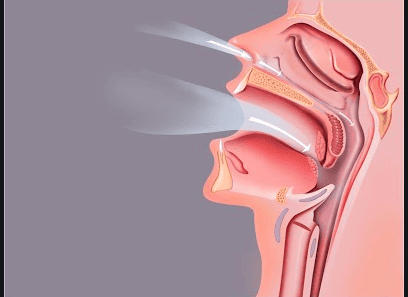
Hình ảnh đốt cuốn mũi
5.4 Follow-up after burning the nasal tip
At the end of the intervention, the patient may experience mild to moderate swelling; Sometimes there is airway obstruction due to irritation that increases mucus secretion, but this may clear up within the first week.
If the nasal mucosa is also damaged after ablation, they will be at risk of bleeding but will also heal quickly.
Burning the nose is a minimally invasive technique, causing little pain and not causing bleeding, burning the nose helps to effectively narrow the nose and improve the quality of the airway for the patient.
Vinmec International General Hospital is one of the hospitals that not only ensures professional quality with a team of leading medical doctors, modern equipment and technology, but also stands out for its examination and consultation services. comprehensive and professional medical consultation and treatment; civilized, polite, safe and sterile medical examination and treatment space.
Please dial HOTLINE for more information or register for an appointment HERE. Download MyVinmec app to make appointments faster and to manage your bookings easily.




